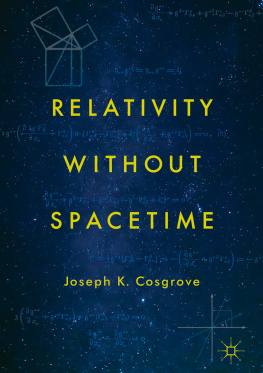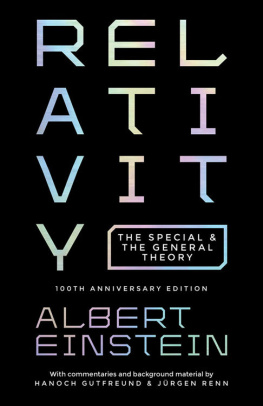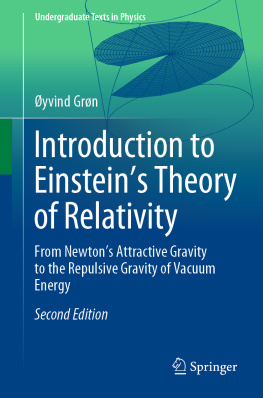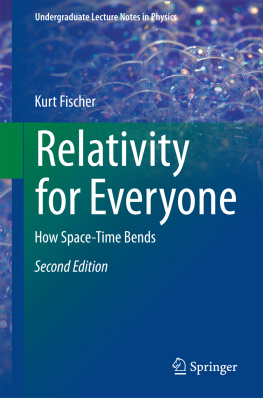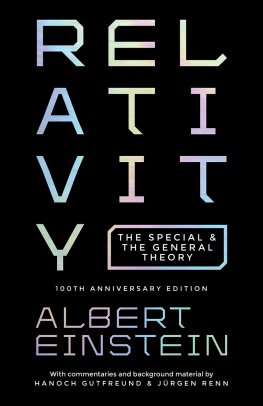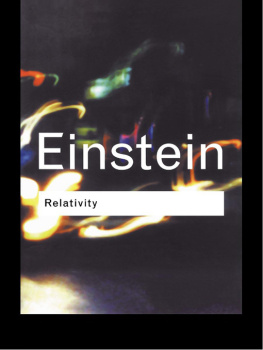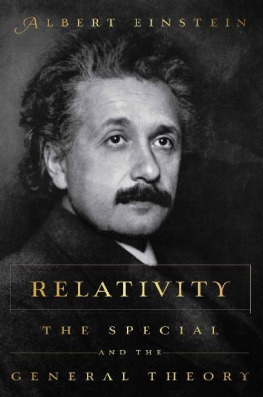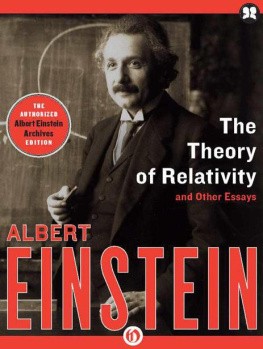1. Introduction: A Critique of Minkowski Spacetime
In 1908, three years after Einstein first published his special theory of relativity, the mathematician Hermann Minkowski introduced his four-dimensional spacetime interpretation of the theory. Einstein initially dismissed Minkowskis theory as a piece of mathematical trickery, remarking wryly that [s]ince the mathematicians have invaded the theory of relativity I do not understand it myself anymore.
The physical validity of Minkowskis concept of merged spacetime has rarely been questioned by physicists or philosophers since Einstein incorporated it into his theory of gravity. This is strange in one sense, for there is no general agreement on the physical meaning of Minkowskis theory. Indeed, one can only sympathize with Vesselin Petkovs complaint that while physicists and philosophers of science routinely endorse and employ Minkowskis four-dimensional formal apparatus, at the same time they habitually speak about the world as if it were really three-dimensional in the usual sense, giving back to themselves with one hand, as it were, what they have just taken away with the other. Physicists in fact often employ Minkowski spacetime with little regard to the whether it provides a true account of the physical world as opposed to a useful mathematical tool in the theory of relativity, while philosophers, for their part, sometimes treat the philosophy of space and time as if it were merely an appendix to Minkowskis theory. The purpose of this book, then, is to subject the concept of spacetime to a much overdue critical examination, with a view toward a more physically intelligible interpretation of Einsteins special and general theories of relativity. For I believe that Einsteins initial assessment of Minkowski was essentially correct.
Anyone conversant with the theory of relativity knows, or at least thinks they know, that Minkowski merged space and time into a single four-dimensional geometrical continuum. However, the precise character of the intended merging of space and time is not always clear in the literature on spacetime. One often reads, for example, that from our present vantage point we can see that even Newton and Galileo employed a four-dimensional spacetime continuum, even if they treated time and space independently of one another. Einstein himself, for instance, suggests that the idea of a four-dimensional continuum is not something newly introduced by the theory of relativity, since classical mechanics also employed a four-dimensional continuum which, however, falls naturally into a three-dimensional and one-dimensional (time), so that the four-dimensional point of view does not force itself upon one as necessary .
It would be helpful at the outset, then, to note briefly some of the senses in which it may be said that space and time are unified in a given theory of physics. The minimal notion of such unification is a mere n-dimensional manifold in which each point event can be associated with n numbers (coordinates). This amounts to saying that every event happens at a time and place. In this minimal sense, Newtons physics indeed may be said to employ a four-dimensional spacetime manifold, something naturally suggested by diagrams in which time is symbolically represented by the length of a line in space (usually in Cartesian coordinates). But there is no single continuum of space and time in Newtonian physics, since space and time intervals are independent of one another, with no four-dimensional interval between events defined and therefore no metrical unification effected. While it is commonplace today to reconstruct Newtonian physics using the mathematical apparatus of differential geometry, as Michael Friedman notes, We effect a relativistic unification of space and time only if we view space-time as a four-dimensional semi-Riemannian manifold.
Einsteins 1905 special theory of relativity introduces a new kind of metrical entanglement of space and time. Here the measure of a time interval between two events in some inertial frame A depends, through the Lorentz transformation, on both the time and distance between those events as measured in an inertial frame B in motion relative to A , and likewise for a distance in A as a function of time and distance measured in B . As Einstein formulates it, the necessity of the four-dimensional point of view in special relativity, unlike the situation in Newtonian dynamics, lies in the formal dependence between the way the space coordinates, on the one hand, and the temporal coordinates, on the other, have to enter into the natural laws. By contrast, in pre-relativity mechanics, metrical intervals of time and distance are the same for all inertial reference frames.
Nevertheless, Einstein 1905 special relativity in no sense merges space and time into a single continuum . That is to say, even though in pre-Minkowski special relativity we regard the metrical properties of space and time as interdependent or entangled, space and time themselves remain distinct continua with no metrical unification per se. Thus, while in differential geometry , for instance, a metric continuum is defined by its distance function or line element (quadratic differential form), in Einstein 1905 there is no such distance function for time and space taken together. This point is easily obscured by the standard use in special relativity of Minkowski diagrams (which would be much more aptly termed special relativity diagrams, since they in no wise distinguish Minkowskis theory conceptually from Einstein ), and the associated jargon of world lines, light cone structure, and so forth.
At the very least, then, it seems the term spacetime is associated with a number of distinct conceptions of the unification of space and time. But it is only with Minkowskis introduction of the invariant interval or four-dimensional displacement vector that we encounter anything that could be properly termed the unification of space and time into a single continuum . By spacetime in this study, then, I shall always intend specifically Minkowski spacetime or the idea, set forth most famously by Minkowski in his Cologne lecture of 1908, that space and time as they physically exist are merged into a single continuum, geometrically determined by a four-dimensional line element analogous to the Pythagorean line element of standard differential geometry. To be sure, today we often speak of spacetime in a wider sense. However, the present terminological restriction is not at all arbitrary, for only with the advent of Minkowskis theory do we find the essential condition for a metric continuum of space and time: a distance function. Clearly there is no such notion in Galileo or Newton, and therefore it is misleading to say that either of them employed a four-dimensional continuum.
It is unfortunate, in view of the very radicalness of Minkowskis proposal, that Einsteins 1905 special theory of relativity has come to be regarded as virtually synonymous with Minkowskis 1908 theory, as if the latter simply elaborated what was already implicit in the former. Such an identification, which forecloses the possibility that one might wish to avail oneself of Einstein 1905 while abstaining from Minkowski 1908, reflects a kind of whiggish view of the history of relativity, according to which Minkowskis theory represents the inevitable disclosure of the deep geometrical structure of Einsteins 1905 theory, originally overlooked by Einstein himself. But the proposition is a dubious one. For even if Minkowskis theory yields the same empirical results as Einstein 1905, the former nevertheless posits a new set of absolute geometrical objects that have no role whatsoever in the ontology of Einsteins original theorythe absolutes of which are rather the laws of nature. Thus, unless we wish to insist that theories making the same empirical predictions are equivalent, regardless of their respective ontologies and conceptual structures, Einstein 1905 and Minkowski 1908 are clearly different theories.

